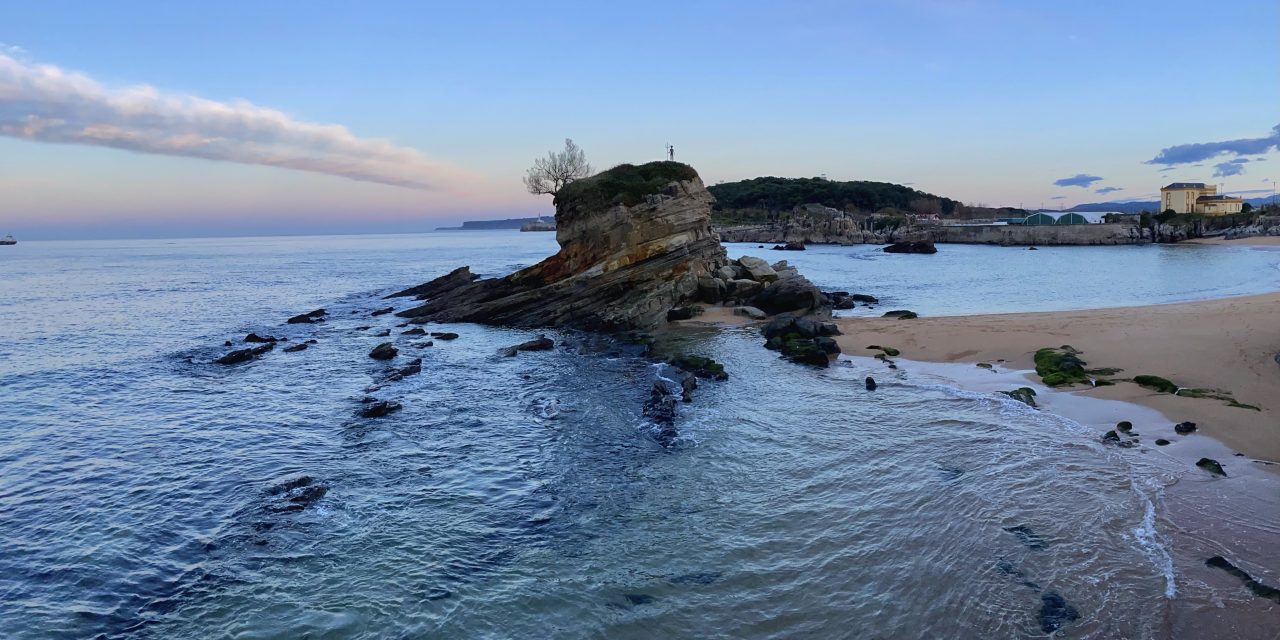The Bay of Santander is so enchanting that Jorge Sepúlveda, a famous bolero singer, even wrote a song about it. But how can we protect and adapt this coastal city against climate change? It’s the middle of December and the thermometer is hitting 19 degrees celsius. The locals of Santander have already noticed the results of climate change on their beaches, where large portions of sand have been swallowed by the sea. The mountains aren’t white from the snow like they used to be, and the drinking water supply is at risk because of drought.

El Sardinero, July 2016, by Mayra van der Drift
The Bay of Santander is changing
Any person that’s been living in Santander for some years, will tell you that climate change can definitely be noticed in the city. Santander is known for their mild weather thanks to its coast and mountains, but the current temperatures are far from normal. It’s about a week before Christmas, though you wouldn’t think so if you’d look outside. The skies are bright blue and there’s no clouds in sight. The terraces on the boulevard fill up as the thermometer reaches 19 degrees celsius. It almost looks like a lovely spring day rather than the middle of December.
‘The temperatures are alarming’
The usual mild temperature they’ve been used to is between 10 and 14 degrees with lots of rain. However, the rain is rarely found anymore. Last summer it even got to the point that the township had to ask the province to give them more water from the reserves, because they were short on clean water for consumption. Usually they get their water from the river Ebro, which gets its water from the snow in the mountains in Reinosa. But due to the temperatures, the river still hasn’t recovered the regular water levels, unlike other rivers in the country.
‘We hope that it will rain sometime soon, as long as we have the Southern wind we won’t see any rain anytime soon’.
Another noticeable thing is the sand on the beaches. The sea has devoured big chunks of the sand. For a tourist this may not be noticeable, but locals will be able to tell with just one look comparing it to years ago. The mountains don’t look the same as they used to either. It’s clear that the Bay’s look has changed over the years.
Dori Gutierrez Gutierrez has been living in the area for 82 years.
‘Nowadays the winters are mild, but I can remember years back when it used to be freezing cold in winter time. You could even see the snowy tops of the mountains right from the Bay’.
Why should Santander’s Bay be protected?
The Bay of Santander is the largest estuary on the Northern coast of Spain. It’s 22.42 km², 9 km long and 5 km wide. An estuary is the area where a freshwater river or stream meets the ocean. The water and salinity (saltiness) in estuaries rise and fall with the tides. This can easily be spotted at Playa del Camello in Santander. In the water you find a large piece of rock that resembles a camel.
What makes the Bay of Santander so special?
It’s been chosen to be part of the Club of the Most Beautiful Bays of the World, an international association that only counts 38 members worldwide. Some of the necessary requirements are being subject to protection measures, having flora and fauna of interest and remarkable natural spaces as well as being appreciated both locally and nationally. Jorge Sepúlveda’s song ‘Santander’ describes this appreciation best:
“I will leave your bay
With a memory of my life
That I will never erase
Santander, when I’ll leave I’ll tell you
Guard my heart
I will return for it”
– Jorge Sepúlveda
How is the city facing climate challenges?
Margarita Rojo is the city councillor of environment, she’s very concerned about the effects of climate change on Santander. One of the projects she’s working on is ‘Santander Capital Natural’. The objective is to conserve biodiversity, strengthen urban green spaces and bettering the quality of life in the city.
Santander is known for their affiliation to the sea. Originally it was a fisher’s city, which can still be seen looking at the local plates of sardines. On the Peninsula de la Magdalena you’ll find a small marine zoo and loads of greenery. But the boulevard of the Bay itself, will also show you beautiful gardens and green strips like the Jardines de Piquio. To keep the Bay as green as it is, it’s essential to conserve biodiversity and making sure the urban green spaces can keep existing or even expanding.
Rojo wishes they could do more for the coastal protection right now, but there simply isn’t enough knowledge on the situation yet. This year they will be finishing their research on the effects of climate change, along with the measures to protect the flora and fauna of the city. That’s why they are mostly investing in the expansion of urban green spaces and teaching the citizens how to form a part of the change. According to Rojo the inclusion of citizens is very important since we all pollute. Citizens and especially the younger generations, need to learn how they impact the climate. One of the projects from Santander Capital Natural, consists of having kids take care of little gardens in school. They plant a tree early on in elementary school, and get to grow along with the tree.
‘This is actually my favorite one out of all the projects we are doing. I think it’s a lovely concept and really shows the kids they can be one with nature.’ – Margarita Rojo

Marine life at the Peninsula de la Magdalena
Future risks for Santander’s Bay
Santander may be a nature-filled coastal city now, but if we don’t adapt to climate change, researchers think it might get a drier and hotter Mediterranean climate or will even flood due to rising sea levels. Even though almost all of Spain has dealt with floods due to heavy rainfall recently, the provinces Cantabria, Asturias and Pais Vasco dodged a bullet. For some reason they didn’t suffer from the predicted rain and subsequent flooding. However, it’s not all good news. Because Santander is actually in need of rain. Last year the drinking water supply ran out, since it doesn’t snow as much in the mountains as it used to. But the lack of rain means that the river that is used for said water, can’t recover the water it lost. This may cause problems again next summer if the temperatures stay as high and there’s no rainfall. Rojo said that they can always ask the province for water from the reserves, but that it is concerning that its even needed.
If the city doesn’t adapt to climate change it risks losing one of the most beautiful bays in the world, that Jorge Sepúlveda sang about so lovingly.




